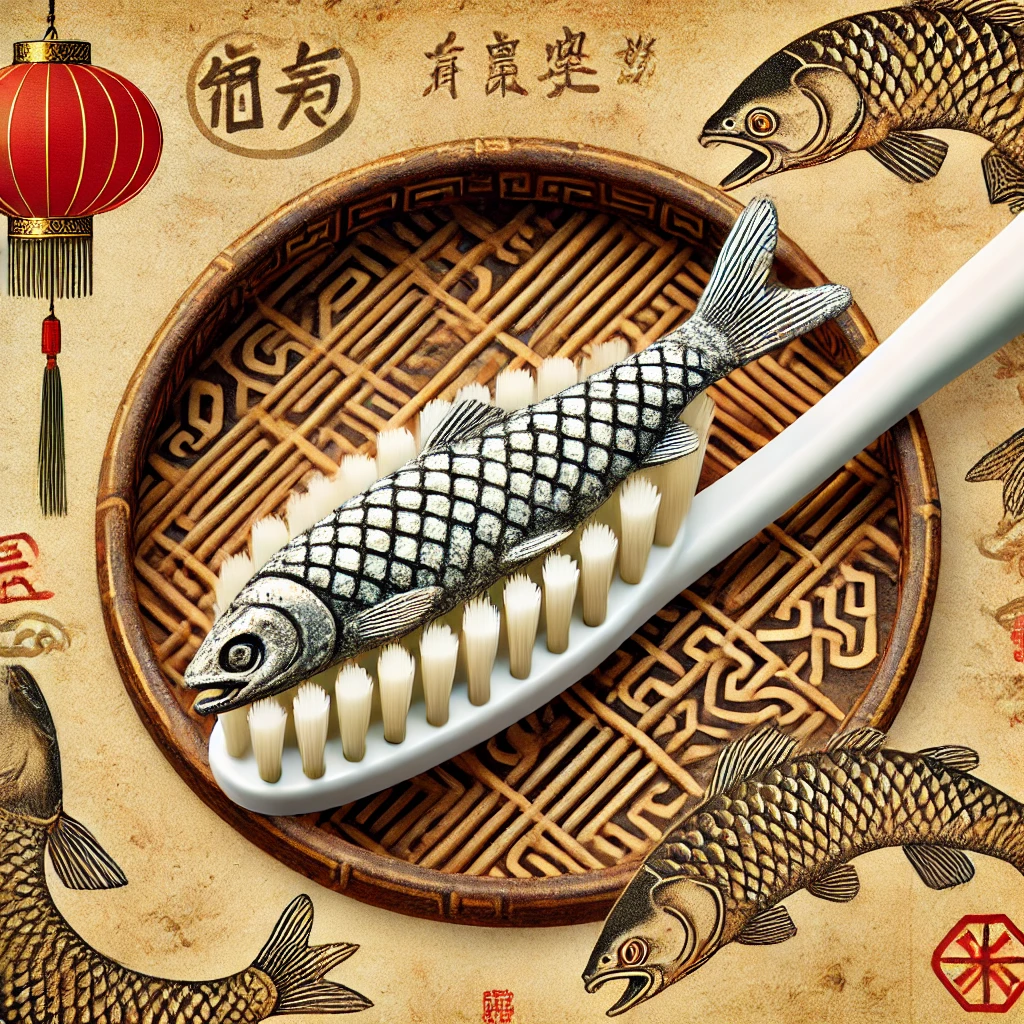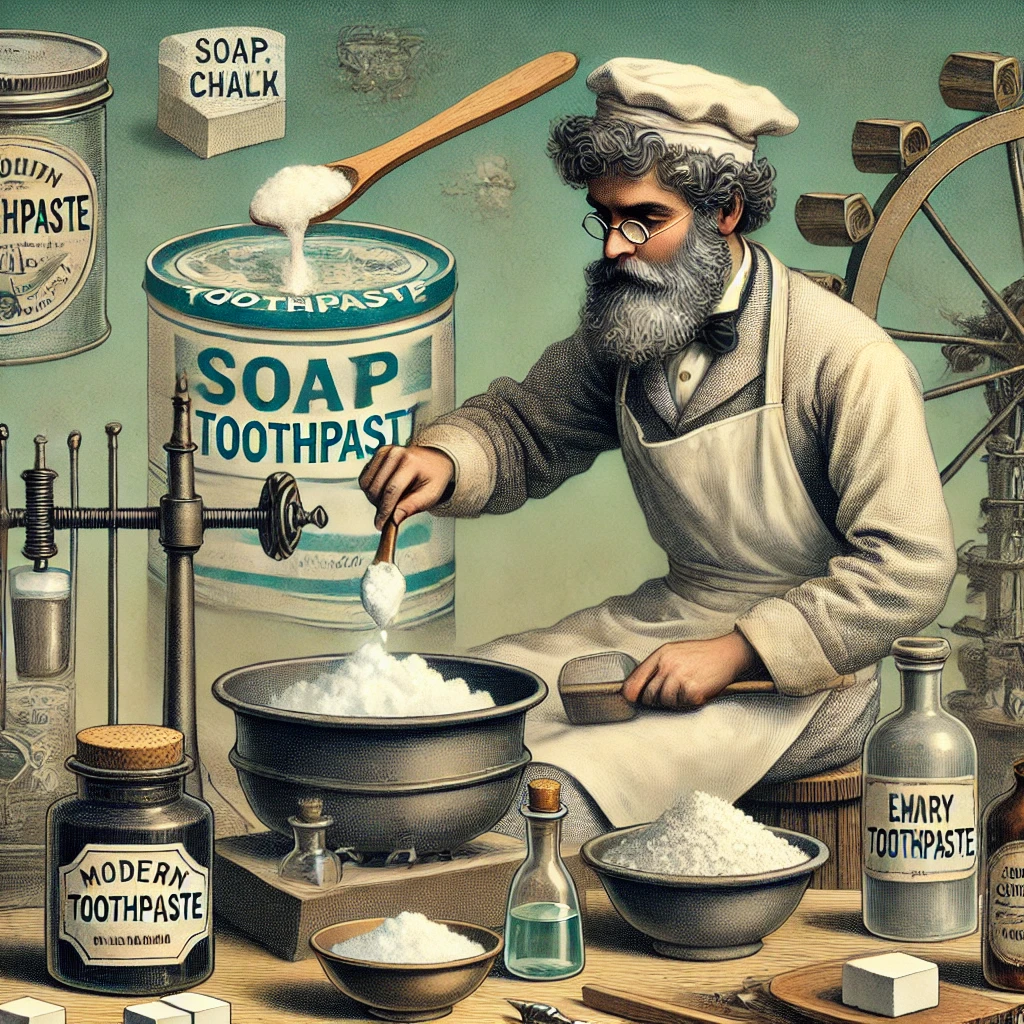Chalk, pumice stone, ox nails, snake teeth, soap, radium… These have all been components of toothpaste formulas throughout history.
Clister: The First Known Toothpaste
According to ancient manuscripts, the first known toothpaste was created 4,000 years ago in ancient Egypt, specifically in the 4th century BC. For this culture, oral hygiene was a symbol of social status, meaning the better the condition of one’s mouth, the higher their social standing.
The Egyptians made a toothpaste known as clister, composed of salt powder, powdered pumice, pepper, ox hoof, water, eggshell, and myrrh. It was very abrasive with a strong taste and smell. To mask bad breath, they added mint leaves and flowers.
They also created another mixture with herbs for antiseptic properties and brick dust for abrasiveness and cleaning.

Oral Hygiene in Greece and Rome
Similar to Egyptian culture, Romans and Greeks also associated dental hygiene with social status.
They used a mixture of ash, honey, and salt; the ash removed superficial stains and plaque, honey provided antiseptic properties, and salt had similar functions to the ash.
Dental Hygiene in Other Civilizations
Throughout history, many cultures developed their own toothpastes and oral care tools:
In ancient China, they created the first toothbrush from fish bones and bristles. Before this, they used areca twigs as toothpaste, also used by Eastern cultures, mixed with lime from ground mollusk shells. This mixture acted like chewing gum, keeping teeth white, clean, and shiny.
According to records from 550 BC, Persians used a brush with a mixture of tincture and boric acid to clean their mouths. In Europe, doctors like Frederick Slare, an 18th-century English physician and chemist, recommended using cane sugar for oral hygiene.
The Mayans also innovated in dental hygiene; they used natural substances from the root of Rauwolfia heterophyyla willad to combat cavities, bad breath, or dental discomfort. They also used iguana ashes, pulverized soot, or the bile of some frog species. Rattlesnake tooth was a common analgesic.
In Spain, one of the earliest records of toothpaste dates back to the 11th century, created by Ibn Wafid, a doctor and botanist from Toledo. In his book Kitab al-Wisad, he described a toothpaste made from mint leaves, basil, quince, peach, rose leaves, citron leaves, and Toledo soap earth, all pulverized together.
Interestingly, in Arab culture, teeth cleaning was part of a ritual for the deceased, ensuring their spirit presented itself clean before Allah, unlike in ancient Egypt or Rome where it signified high birth.
The Modern Toothpaste
As we have seen, each culture developed its own formula. However, it wasn’t until the mid-19th century that the toothpaste we use today began to take shape:
The First Attempts
After the industrial revolution, there were several attempts to create a product for oral hygiene. One of the most notable was by the dentist Peabody, who added soap to toothpaste, marketing the first toothpaste in history in Great Britain, in powder or ceramic packaging.
In 1850, John Harris added chalk to the formula, further perfecting Peabody’s composition.
The First Toothpaste in a Tube
In 1870, dental surgeon and pharmacist Washington Sheffield Wentworth invented the first toothpaste to be sold in a collapsible tube.
After private testing, he named it Creme dentrifique. Three years later, Colgate launched its first mass-produced toothpaste, sold in powder form in glass jars.

The idea for the toothpaste tube as we know it came from Wentworth’s son, who adapted oil paint containers for his father’s invention in 1892. Colgate adopted this system in 1896.
Incorporating Fluoride into the Recipe
Although Wentworth’s toothpaste improved oral hygiene, it was not perfect. Dentist Frederick McKay investigated fluoride’s properties for oral hygiene in 1901, leading to the first fluoride toothpaste in 1904. It became widespread in industrialized countries by the late 1960s.
Since fluoride is toxic, especially for children, children’s toothpastes contained lower fluoride concentrations.

Evolution into the 21st Century
McKay’s innovation improved dental hygiene in the 20th century, leading to new techniques for treating conditions like:
- Red toothpaste: Using cochineal tincture, it reddened gums and highlighted teeth whiteness.
- Radium toothpaste: Following Madame Curie’s discovery of radioactivity, radium toothpaste was marketed.
In the 1980s, labs focused on solving tartar and dental hypersensitivity. Baking soda was discovered to benefit these conditions, and early 90s toothpastes targeted tartar removal and healthy gums.
The Last 20 Years
Innovation in toothpaste didn’t stop with fighting tartar and sensitivity. Research continued to address halitosis, periodontitis, and cavities.
Each toothpaste has a unique chemical composition for specific problems, allowing personalized oral care. This progress wouldn’t have been possible without the groundwork by Wentworth and McKay.
Dental Hygiene in the 21st Century
The importance of good dental hygiene is taught from childhood, emphasizing brushing after every meal.
However, experts stress the need for other techniques like dental floss to clean between teeth or a dental irrigator for thorough cleaning.
And most importantly, customize your cleaning with the accessories and techniques that best suit your needs.